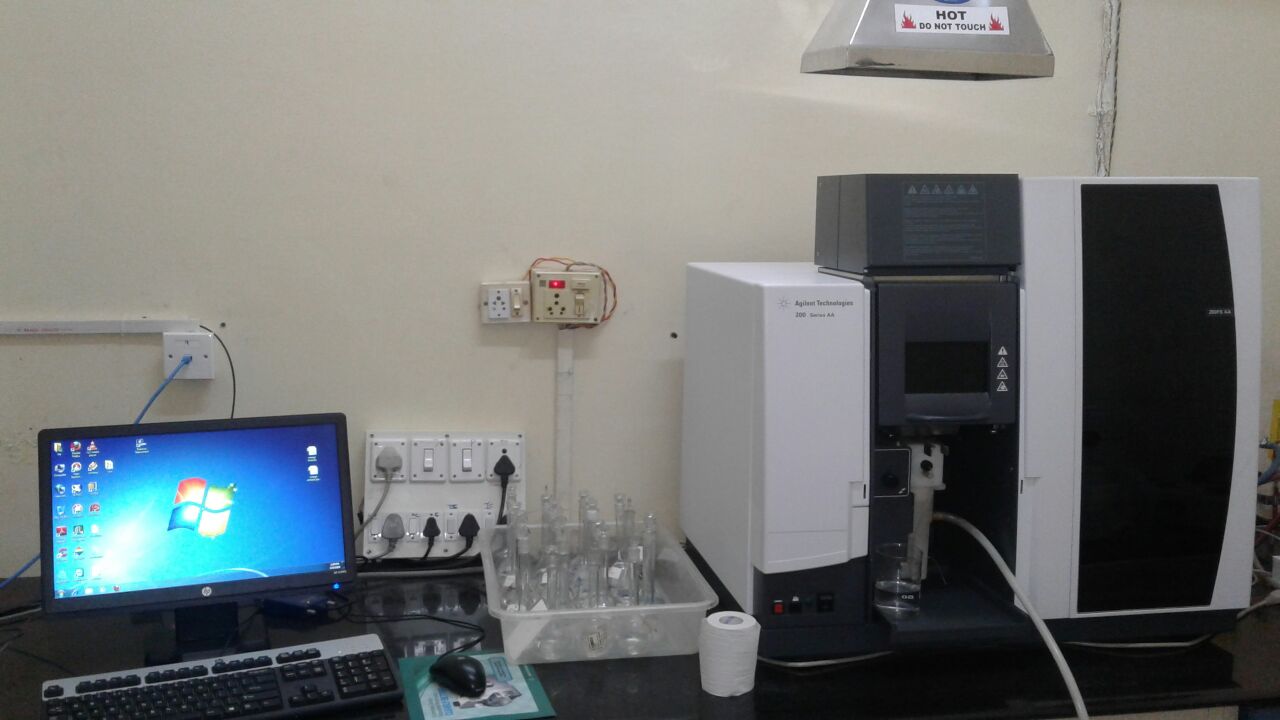
Atomic Absorption Spectrometer (AAS)
Make and Model:
Agilent 280 FS
Rs: 0
| Specifications | The Agilent 280FS AA is a fast and productive flame AA system, featuring Fast Sequential operation combined with 8-lamp capability, premium optics, and UltrAA lamp looms for greater performance. The 280FS AA features automatic lamp selection, a programmable gas box, and D2 background correction, and can be fitted with a full range of AA accessories to further extend its capabilities. Able to handle multi-element suites with ease, it is ideal for micronutrient analysis for various uses viz., environmental, food, and agriculture applications. |
| Highlights of importance and applications of instruments | Atomic absorption spectrophotometry (AAS) is one of the principal instrumental techniques for elemental analysis (Fe, Mn, Zn, Cu and some heavy metals) in most soil science laboratories. In AAS, atoms excited in an oxyacetylene flame absorb light at wavelengths characteristic of each element. Light absorption is proportional to the concentration of atoms in a light path. The most commonly used radiation source is a hollow cathode lamp, consisting of a tungsten anode and a cylindrical cathode sealed in a glass tube filled with neon or argon gas. Though both single-beam and double-beam instruments are available, double- beam instruments are preferred because they minimize effects of lamp emission variations, detector sensitivity, and electronic gain. Acetylene (C2H2) as fuel and air or nitrous oxide (N20) as oxidant is commonly used. An air-Q-12 flame (2100-2400°C) is used for elements (such as calcium, magnesium) that do not form refractory compounds arid have low ionization potentials; an N20-C2H2 flame (2600-2800°C) is used for elements (such as aluminum) forming refractory compounds. More than 60 elements can be determined by AAS. Besides detection limits, factors such as matrix or interference effects are major influences on the viability of particular analyses. Problems caused by the formation of stable compounds or compounds of low volatility by the element of interest in combination with some anion can be overcome by the addition of an excess of a "competing cation" or a "releasing agent". For example, lanthanum (1000 mg/1) as chloride can be added in the determination of calcium and magnesium to remove the potential interference due to aluminum and phosphorus. |
| Parameters/analysis that can be analysed in the instrument | |
| User instructions for sample preparation | It should be clear pre-digested liquid form. |
| Parameters that can be analyzed on the instrument/facility | Atomic absorption spectrophotometry (AAS) is used for elemental analysis of Fe, Mn, Zn, Cu, Ca, Mg, K, Se, Ni, Co, Pb, Cr and As. |


